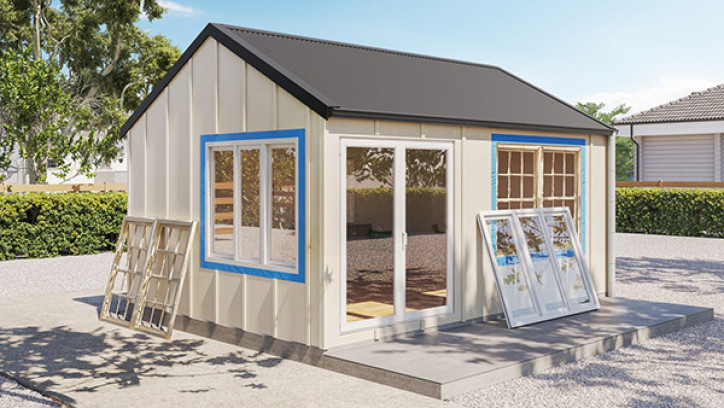2.8 Repair or replacement of outbuilding

A building consent is usually not required to replace or repair a carport, garage, shed, greenhouse, machinery room, private swimming pool or farm building.
This exemption provides for the repair or replacement of existing outbuildings (as classified under Building Code clause A1 – Classified uses) that are not intended for human habitation. These include buildings such as carports, garages, greenhouses, machinery rooms, sheds, private swimming pools and farm buildings.
Always check with your council to ensure your proposed building work complies with any district planning rules (eg maximum site coverage, yard/setback requirements, daylight access planes or permitted activities).
Your proposed building may require a resource consent or deemed permitted boundary activity* notice; it is important that you obtain one before starting any building work.
If you are building close to a boundary, the Building Code could require additional protection from fire; particularly to prevent fire spread to neighbouring property.
*The deemed permitted activities are a 2017 RMA innovation: https://www.mfe.govt.nz/publications/rma/technical-guide-deemed-permitted-activities
What is exempt
- A timber weatherboard garage wall is severely damaged in an earthquake. The owner decides to replace the garage wall in the same position using prepainted, profiled metal cladding.
- A farmer decides to replace an old corrugated iron clad storage shed with a new shed in the same position and of the same size. The new shed will have a long-run steel roof and timber weatherboard wall cladding.
- The owner of an old concrete block garage, which has part of its roof missing, decides to demolish it. They replace it in the same position with a new, prefabricated timber-framed garage. As the garage is more than one metre from the boundary, a fire rated wall is not required.
- An elderly couple decide to downsize their deteriorating double garage and replace it with a new single garage. This will occupy part of the footprint of the existing garage.
What needs consent
- The owner of a commercial garage decides to replace an old wooden garage, which is 50 square metres in size, with a new 65 square metre galvanised steel garage. Since the new garage is larger than the original, a building consent is required.
- A farmer plans to replace an old farm shed by relocating part of it to the other side of their property and adding a new extension to it. As the farmer is not planning to rebuild in the same locality as the existing farm shed, a building consent is required (however, may be exempt with the pole shed exemptions 4A or 49 (sections 2.7. or 2.6.).
- A council proposes to replace an existing masonry public toilet block. Although the definition of outbuilding under the Building Code includes public toilets, a building consent is required. This is because condition (d) of this exemption does not allow the outbuilding to be open to, or used by, members of the public.
- The owner of an earthquake-damaged carport proposes to replace it with a garage on the same footprint. As the proposed garage is not a comparable outbuilding, a building consent is required (however may be exempt with the 30 square metre single-storey detached building exemptions 3B or 43 (sections 2.4. or 2.3.)).
What the law says
7. Repair or replacement of outbuilding
1. The repair or replacement of all or part of an outbuilding if:
(a). the repair or replacement is made within the same footprint area that the outbuilding or the original outbuilding (as the case may be) occupied; and
(b). in the case of any replacement, the replacement is made with a comparable outbuilding or part of an outbuilding; and
(c). the outbuilding is a detached building that is not more than 1 storey; and
(d). the outbuilding is not intended to be open to, or used by, members of the public.